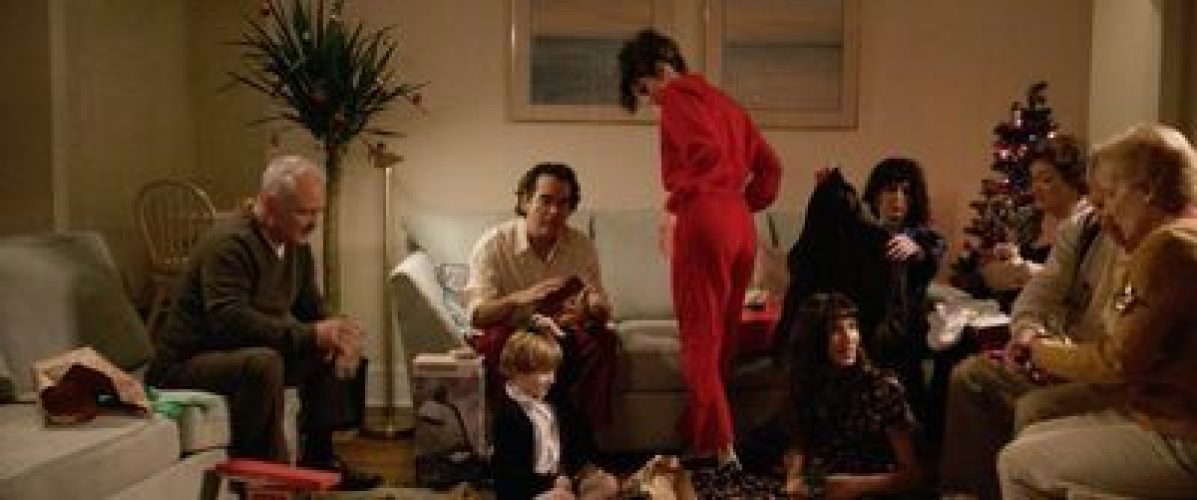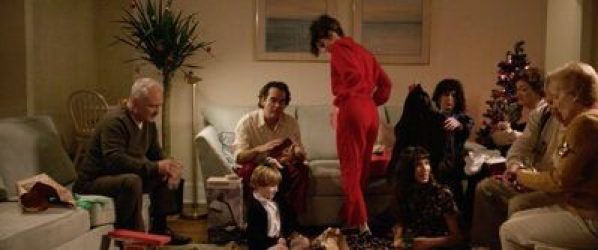In Henry James’ 1897 novel What Maisie Knew, the child Maisie is an innocent bystander and victim of the dissolution of her narcissistic parents’ marriage. What makes What Maisie Knew a “modernist” novel (before Modernism as a literary concept came along), is its point of view. Told only from Maisie’s perspective, we experience her six-year-old mind trying to understand.
Telling the story of adults solely through a child’s eyes is the accomplishment of What Maisie Knew, and it’s the accomplishment, too, of Ricky D’Ambrose’s “The Cathedral.” “The Cathedral” is presented as fiction, but it has the ring of autobiography, a telling of not only his parents’ divorce, but the complicated adult relationships surrounding him as a child. If the story was told from the adults’ perspective, it would be a dime a dozen. The same story, told from the confused (and yet perceptive) point of view of a child is a very destabilizing and emotional experience.
“The Cathedral” marries form to content in a striking way. There is a voiceover (Madeleine James), who assumes a third-person “objective” voice, accompanied by still-life images: postcards of the places mentioned (Puerto Rico, the Bahamas, Atlantic City), news clips from the time period, resurrecting old scandals (Chandra Levy, George W. Bush’s 30-day vacation) or major events (Desert Storm, the crash of TWA flight 800, September 11). D’Ambrose doesn’t clutter up the narrative with a flip-book style of editing. Adult voices are heard talking, while the camera stays on a shot of a sunlit rug, a child’s drawing, food on tables: half-eaten birthday cake, the catered fare provided at the events in the child’s life like birthdays, confirmation, high school graduation, etc. This style along with the voiceover creates a vast distance between us and the characters. What we watch unfold—a marriage breaking up—is banal. Almost 50% of marriages end in divorce. The distant style and close point-of-view allows us to lean in, to empathize on a different level. There are almost no close-ups.
Let’s start at the beginning. The narrator informs us that Jesse Damrosch was conceived during his parents’ vacation in Puerto Rico, right around the time his uncle died of AIDS (the family told everyone he died of “liver disease,” and seem to tell themselves that as well). Names pile up in dizzying fashion: uncles, aunts, grandmothers, a great-grandmother, many of whom are either not speaking to each other, or on the verge of cutting ties. This is a grudge-holding family on both sides. At the center is Jesse (played at different ages by Robert Levey II and William Bednar-Carter), a serious young boy who seems to be trying to make himself invisible, and therefore safe, from the tumultuous emotional lives of the adults in charge of him.
His parents, Lydia (Monica Barbaro) and Richard (Brian d’Arcy James), start off strong, although the voiceover clues us in early that something might be a little “off,” particularly with Richard. The reveal is slow: Lydia’s father does not like or approve of Richard. Richard feels insecure and lashes out. Lydia’s mother and aunt have been feuding for years, and nobody knows what it’s even about anymore. A great-grandmother is shuffled around among her children. Nobody wants to take care of her. Lydia and Richard’s marriage falls apart. Both of them remarry. Richard’s marriage is extremely “sketch,” as they say.
Jesse barely says a word throughout, and the voiceover, interestingly enough, is only concerned with the adult melodramas. Half the time I wanted to interrupt that chilly voice and say, “How is Jesse doing? What are his interests? Does he have friends? How is he doing? Why isn’t anyone concerned with how Jesse is doing?” This is what the distant style provides, and this is what is reminiscent of Henry James’ novella. The adults are so self-consumed, so defensive, they expose all their ugliness to a six-year-old, without once considering the impact.
I read a review of “The Cathedral” where Jesse is described, inexplicably, as “calm and unperturbed.” I saw a child who senses that the adults around him are unpredictable, selfish and petty. Understandably, he dissociates as a survival technique.
The acting in “The Cathedral” feels “caught on camera” rather than “performed.” The acting is reminiscent of what Joanna Hogg’s actors achieve: Hogg places the camera at the edge of a room, letting people walk in and out of frame, conversations overheard from the next room. This requires a documentary-like reality in performance. D’Ambrose focuses on feet, hands, ancillary details, as conversations are heard in voiceover: sometimes the conversation is polite banter, but with all this underlying stuff underneath. Actors have to be so on point with this style. Even with only one or two close-ups, Brian d’Arcy James gives an extremely insightful (and upsetting) performance of a man seething with self-pity and rage, who feels like the world has let him down, who feels like the world should be more welcoming to him. At one point, on a grim vacation to Atlantic City with his son and his new wife, all the hotels are booked up since he called at the last minute. He slams the phone down saying, “Nothing is easy.” Richard can be scary. He ruins family gatherings. Everyone cowers, afraid of what he will do.
Late in the film, the teenage Jesse, interested in photography and filmmaking, explains (in voiceover, presumably in a class) what a photo of his two aunts, lolling on his parents’ bed, in happier days, means to him. Jesse analyzes the room, the light, details we’ve already seen in still-life scattered through the film. There’s a mournfulness in this monologue, although the mournfulness is subtext, not text. Jesse’s focus is on the material details. The chaos of his childhood—the pain inflicted on him by the adults around him behaving in scary unforgiving ways—is there for him in the way the light falls on a rug. It will be with him always.
Now playing in select theaters.
In Henry James’ 1897 novel What Maisie Knew, the child Maisie is an innocent bystander and victim of the dissolution of her narcissistic parents’ marriage. What makes What Maisie Knew a “modernist” novel (before Modernism as a literary concept came along), is its point of view. Told only from Maisie’s perspective, we experience her six-year-old mind trying to understand. Telling the story of adults solely through a child’s eyes is the accomplishment of What Maisie Knew, and it’s the accomplishment, too, of Ricky D’Ambrose’s “The Cathedral.” “The Cathedral” is presented as fiction, but it has the ring of autobiography, a telling of not only his parents’ divorce, but the complicated adult relationships surrounding him as a child. If the story was told from the adults’ perspective, it would be a dime a dozen. The same story, told from the confused (and yet perceptive) point of view of a child is a very destabilizing and emotional experience. “The Cathedral” marries form to content in a striking way. There is a voiceover (Madeleine James), who assumes a third-person “objective” voice, accompanied by still-life images: postcards of the places mentioned (Puerto Rico, the Bahamas, Atlantic City), news clips from the time period, resurrecting old scandals (Chandra Levy, George W. Bush’s 30-day vacation) or major events (Desert Storm, the crash of TWA flight 800, September 11). D’Ambrose doesn’t clutter up the narrative with a flip-book style of editing. Adult voices are heard talking, while the camera stays on a shot of a sunlit rug, a child’s drawing, food on tables: half-eaten birthday cake, the catered fare provided at the events in the child’s life like birthdays, confirmation, high school graduation, etc. This style along with the voiceover creates a vast distance between us and the characters. What we watch unfold—a marriage breaking up—is banal. Almost 50% of marriages end in divorce. The distant style and close point-of-view allows us to lean in, to empathize on a different level. There are almost no close-ups. Let’s start at the beginning. The narrator informs us that Jesse Damrosch was conceived during his parents’ vacation in Puerto Rico, right around the time his uncle died of AIDS (the family told everyone he died of “liver disease,” and seem to tell themselves that as well). Names pile up in dizzying fashion: uncles, aunts, grandmothers, a great-grandmother, many of whom are either not speaking to each other, or on the verge of cutting ties. This is a grudge-holding family on both sides. At the center is Jesse (played at different ages by Robert Levey II and William Bednar-Carter), a serious young boy who seems to be trying to make himself invisible, and therefore safe, from the tumultuous emotional lives of the adults in charge of him. His parents, Lydia (Monica Barbaro) and Richard (Brian d’Arcy James), start off strong, although the voiceover clues us in early that something might be a little “off,” particularly with Richard. The reveal is slow: Lydia’s father does not like or approve of Richard. Richard feels insecure and lashes out. Lydia’s mother and aunt have been feuding for years, and nobody knows what it’s even about anymore. A great-grandmother is shuffled around among her children. Nobody wants to take care of her. Lydia and Richard’s marriage falls apart. Both of them remarry. Richard’s marriage is extremely “sketch,” as they say. Jesse barely says a word throughout, and the voiceover, interestingly enough, is only concerned with the adult melodramas. Half the time I wanted to interrupt that chilly voice and say, “How is Jesse doing? What are his interests? Does he have friends? How is he doing? Why isn’t anyone concerned with how Jesse is doing?” This is what the distant style provides, and this is what is reminiscent of Henry James’ novella. The adults are so self-consumed, so defensive, they expose all their ugliness to a six-year-old, without once considering the impact. I read a review of “The Cathedral” where Jesse is described, inexplicably, as “calm and unperturbed.” I saw a child who senses that the adults around him are unpredictable, selfish and petty. Understandably, he dissociates as a survival technique. The acting in “The Cathedral” feels “caught on camera” rather than “performed.” The acting is reminiscent of what Joanna Hogg’s actors achieve: Hogg places the camera at the edge of a room, letting people walk in and out of frame, conversations overheard from the next room. This requires a documentary-like reality in performance. D’Ambrose focuses on feet, hands, ancillary details, as conversations are heard in voiceover: sometimes the conversation is polite banter, but with all this underlying stuff underneath. Actors have to be so on point with this style. Even with only one or two close-ups, Brian d’Arcy James gives an extremely insightful (and upsetting) performance of a man seething with self-pity and rage, who feels like the world has let him down, who feels like the world should be more welcoming to him. At one point, on a grim vacation to Atlantic City with his son and his new wife, all the hotels are booked up since he called at the last minute. He slams the phone down saying, “Nothing is easy.” Richard can be scary. He ruins family gatherings. Everyone cowers, afraid of what he will do. Late in the film, the teenage Jesse, interested in photography and filmmaking, explains (in voiceover, presumably in a class) what a photo of his two aunts, lolling on his parents’ bed, in happier days, means to him. Jesse analyzes the room, the light, details we’ve already seen in still-life scattered through the film. There’s a mournfulness in this monologue, although the mournfulness is subtext, not text. Jesse’s focus is on the material details. The chaos of his childhood—the pain inflicted on him by the adults around him behaving in scary unforgiving ways—is there for him in the way the light falls on a rug. It will be with him always. Now playing in select theaters. Read More


